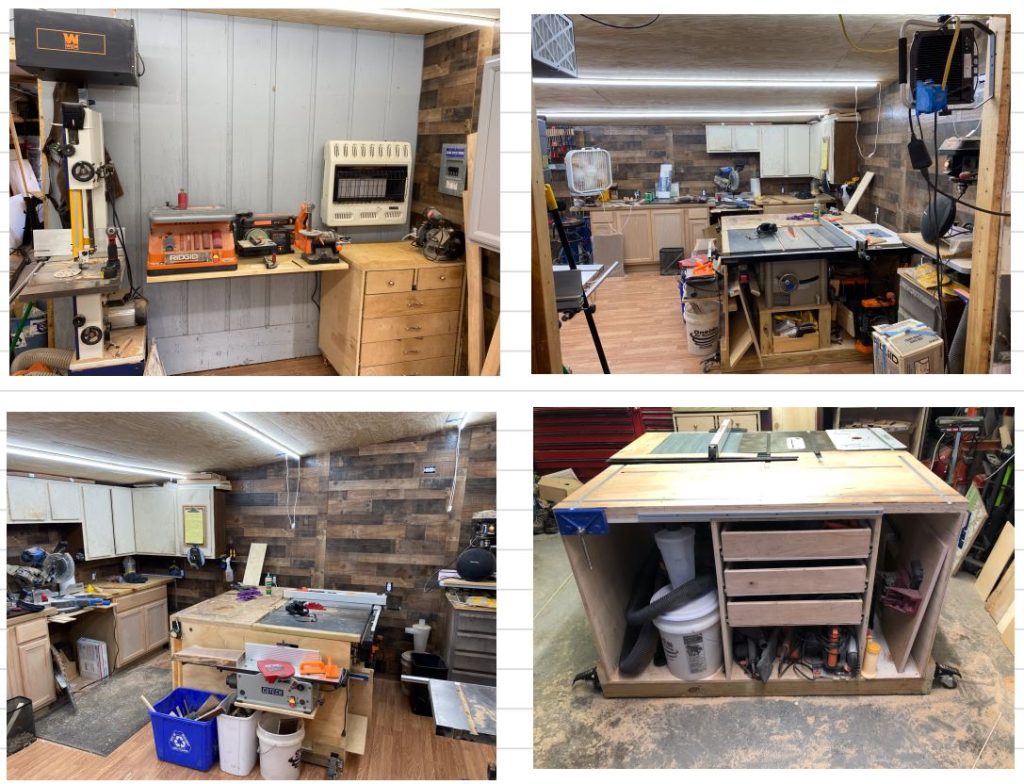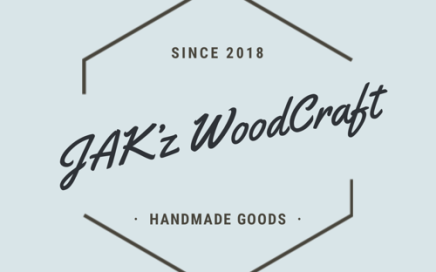by John Kaczynski
In the previous article, I talked a bit about shop setup. I touched on a little background on my situation and some of
the choices I made in the process. In that article, I mentioned the topic of organization and shop furniture so I figured that I could go a little deeper into these topics if that’s ok with you.
Great! Glad you liked the idea, so let’s begin with the topic of organizing your space, equipment, and of course, tools of the trade.
First off we need to establish the main bulky tools that may not move around too much ( not to say they can’t
and won’t but for argument’s sake, for now, they won’t ) These items are your table saw, maybe a band saw and miter
station or stand. Depending on what type of work you do you will want easy access to them so they are ready for every
job. I have mine set up in a way that my table saw is my center work area and on one side is the miter saw and the other is my band saw. This seems to work well for me at this point. I have also built my table saw into a workbench that doubles as an outfeed and assembly table. In the base under my saw, I have storage for things like my cross-cut sled, miter gauge, extra blades, inserts, etc… it also houses a shop vac hooked up to the saw. Now that helps but the dust
collection on my saw has a lot to be desired. The other side has drawers for most of my normal use items, straight
edges, rulers, hammer, chisels, and sandpaper ( all this will be changed at some point because we all know large deep
drawers is where tools go to die ( that’s a quote from Adam Savage for those who know, you know what I mean ) but
that being said it’s readily available and used often.
This workstation also has room to grow as I need but ultimately is just storage to keep things out of the way. On the
topic of shop furniture keep in mind it doesn’t need to be perfect in every way you can build it out of leftover material or even scraps it does not need to be made from solid walnut and ambrosia maple ( although 2 of my favorites) it needs to be practical for the space and also accommodate what it’s designed for. So if you’re building a cabinet for storage of large items then that’s what it needs to do. Still on the cabinet topic keep, on the lookout for sale items at the big box stores, and check on your local marketplace there are always people who are taking out old kitchen cabinets that you can repurpose in your shop. Remember just because you’re a woodworker it’s ok to paint some cabinets to look great in your space
.
Once you have the basics set up allow yourself to make changes in your storage as your projects change, you may
find yourself adding shelves inside them or building pullouts for added flexibility this aspect can be very rewarding in the shop and really helps you grow as a maker. I’m in the process of writing the winter months to make some of these very changes in my shop and it’s really exciting the possibilities that I have.
Here are some pictures of a couple of the things in my shop that I spoke of and they have changed location a couple of times. It’s part of the fun! Now get out there and make your space awesome, enjoy the time you have out there, and make that man glitter.
Thanks again
John Kaczynski
JAK’z woodcraft



